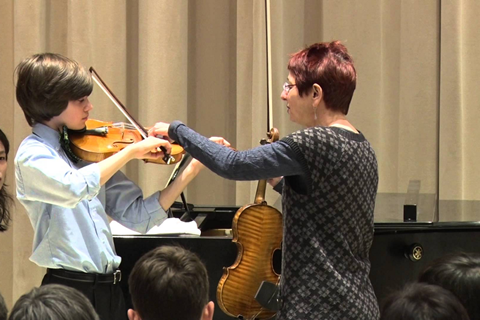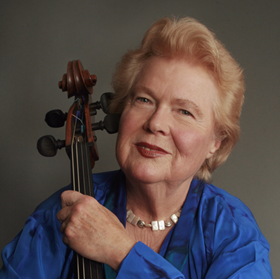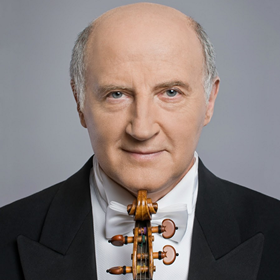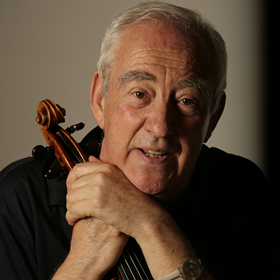We asked five enormously experienced string pedagogues what advice they would give to an instrumental teacher at the beginning of their career


Géza Szilvay: Before starting to teach the violin to a child the teacher should decide what approach or method they will follow as a main line in their teaching. If you choose the traditional way and teach the child through reading, you should understand the logic of the method and therefore play all the volumes of the chosen school. Nevertheless, do not be ‘one-booked’.
Chamber music and performing pieces should be added to the basic teaching material from the very early lessons. Zoltán Kodály said: ‘For children, only the best is good enough’. Search for the ‘best’ by taking courses and workshops regularly. Seek an approach that suits you, but before the decision is made, acquaint yourself with the majority of the main methods.
Be prepared for every single lesson. Have a plan (day, month and year) for all your pupils. Don’t teach the same piece for every child, but instead collect and use a great variety of repertoire: you will never be frustrated.
Take teaching with the maximum responsibility. Be aware that the first lessons and years are the most important musically, technically, intellectually and emotionally for the child. You may start a beautiful musical future for a child but you can create victims as well. Do the former.
Géza Szilvay is co-author of the Colourstrings teaching method and principal of the East Helsinki Music Institute

Bonnie Hampton: Teaching is such an important responsibility. One must give it careful thought and not just assume that because one can play, one is ready to teach. The first lessons a student receives make an enormous difference to their ongoing development. A novice teacher needs to think about the basic principles of playing: freedom of movement, balance and good form with flexibility. We only have to turn our own playing the wrong way round, bow in the left hand and fingering with the right, to remember how very much there is to learn.
I was lucky to have a remarkable teacher, Margaret Rowell, who not only taught me good basic habits, but also encouraged me and helped me in my early teaching. It is important to seek out and observe good teaching. Explanation is important, but basically both student and teacher learn by doing it, or observing it being done well. Giving a student a good start instrumentally is crucial, but instilling a love of the music is even more important.
Bonnie Hampton is on the faculty at the Juilliard School, teaching cello in both the college and pre-college divisions
Mimi Zweig (main picture): It is important that the teacher knows the basic principles of violin playing. This begins with an understanding of setting up the violin with physically natural and relaxed motions, and the understanding of how to teach tone production with the basic bow strokes of détaché, martelé and legato.
A new teacher must come with an unlimited amount of energy, enthusiasm and fascination for working with young people.
Mimi Zweig is professor of violin and viola and Director of Pre-College Strings at Jacobs School of Music, Indiana University at Bloomington

Boris Kuschnir: It is important to have patience with the rate at which each individual student develops. Give great care and attention to the physical set-up of the student, striving to achieve a natural way of holding the instrument without unnecessary tension. Special attention must be given to the correct movement when changing position in the left hand, and to the smooth change of bow both at the tip and at the heel.
Beware of giving students repertoire which exceeds their current technical ability: even if it may seem impressive, doing so can cause great damage to their development.
Be sure to see your students at least twice a week, and allow and encourage them to participate in masterclasses with other teachers, especially those of renowned musicians.
Avoid being excessively critical of students in the presence of their peers or their parents, and never raise your voice at them.
Do not be shy of attending and learning from the lessons of other teachers. Don’t attempt to compete with your colleagues. This always causes the students to suffer. Also, don’t necessarily prioritise the pursuit of prizes at competitions.
Always keep in mind the fact that the distinguishing feature of a great violinist and musician is not only technical brilliance, but also a beautiful and, above all, individual sound.
Boris Kuschnir is violin professor at the Vienna Conservatoire and at the University of Music in Graz

Bruno Giuranna: If you are teaching a child, be in a good mood and be imaginative. Children react well if they sense a creative process – like the process of inventing – in the teacher. Challenge your own way of thinking. If you believe that one learns to play an instrument through music, give your student some technical exercises. If you think that one must first be able to play decently before making music, introduce some easy musical pieces to your student’s work.
If you are teaching an advanced student, be very well prepared and practise the works you are going to teach beforehand.
For teaching all students, check that the relationship between hips, spine and shoulders is correct and that the left thumb is relaxed. Many problems – and future pains – depend on a teacher sitting down in front of their students, observing them specially from that perspective.
When faced with difficulties analyse the problem and help your student by exercising the hands separately, starting slowly, or even very slowly, and speeding up gradually. For left-hand difficulties, forget the printed bowings and play the passage with easy slurs (by one beat, half bars etc). For bow-arm problems, use the correct bowing scheme on open strings.
Bruno Giuranna teaches viola at the Fondazione Stauffer in Cremona, the Conservatorio della Svizzera Italiana in Lugano and the University of Limerick in Ireland
This is an edited version of an article first published in the March 2011 issue of The Strad
Read: How long should a music student practise a piece?
Read: Should violin students take a long summer break without practising?
Read: Ask the Experts: how to teach a group of violin students











































No comments yet